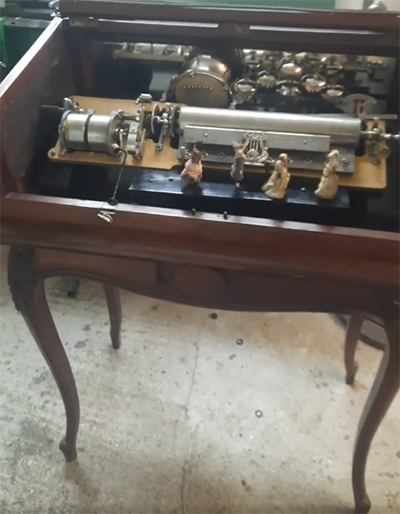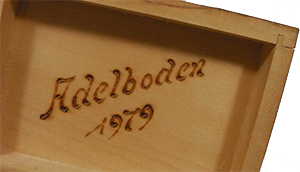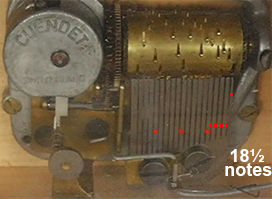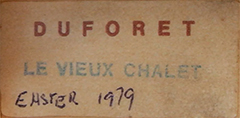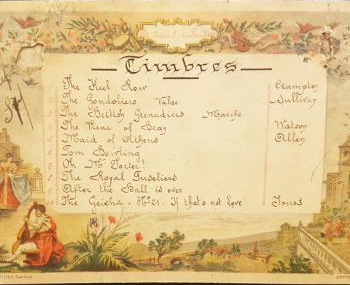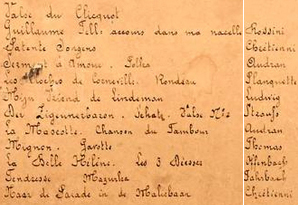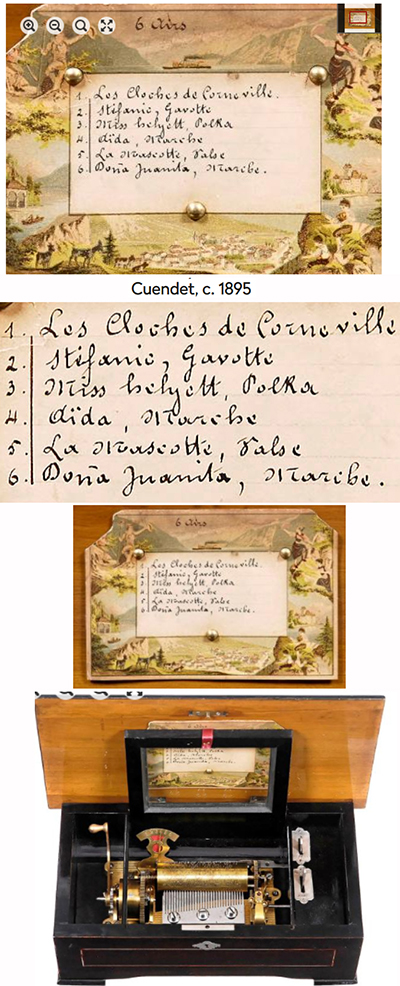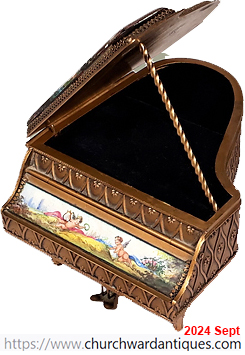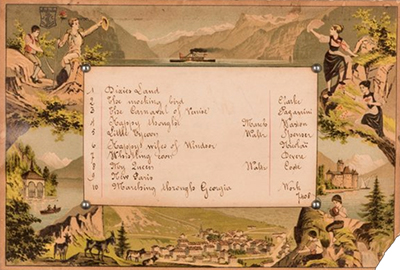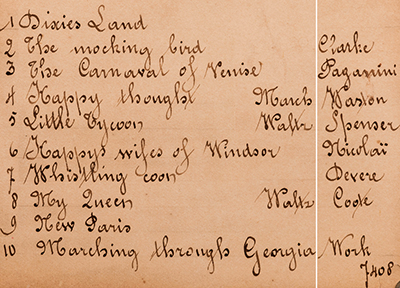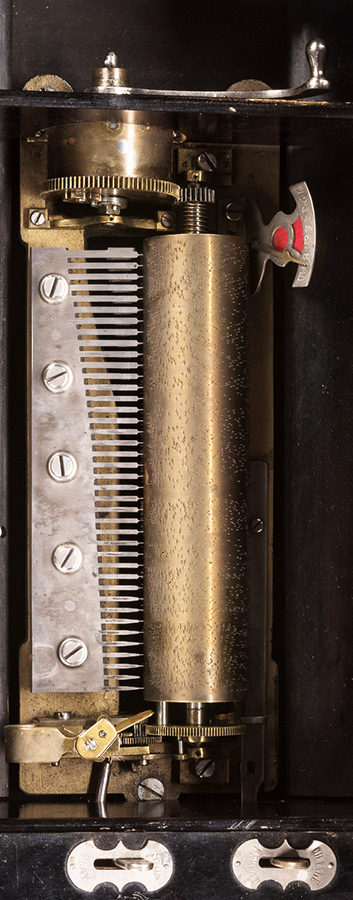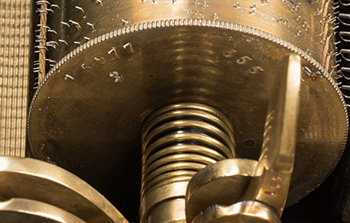The Cuendets (1885 – ?) Jules Cuendet, L´Auberson Cuendet brothers at Ste. Croix Both bought blanks and combs from various sources and both made no effort to identify their products A record of the factory of Jules Cuendet
Various Music boxes by the Cuendets
Ein noch nicht strukturiertes Kunterbunt an 6 unnummerierten ...
[1] (Exposition in Geneva 1896, médaille de bronze) [1] Exposition in Geneva 1896, médaille de bronze
Stills of the film https://www.facebook.com/reel/733238541484390/?group_id=1657559894476638&s=group Boite à musique de Jules Cuendet voix céleste avec un oiseau de 1896 fabriqué à St-Croix Suisse. Cette boite a été exposée a l’exposition National à Genève en 1896 et a reçu la médaille de bronze. Elle a 2 peignes de 31 lames, 2 Zither et 33 anches libres 8 mélodies et un oiseau ©Christian Rossier 2023 Jan 24[2] Philippe Cuendet
[3] Zweifach datiert 1979
[4] Timbres
[5] No number, 1st: Les Cloches de Corneville
[6] Interchangeable with four 33 cm six-air cylinders and 92 comb teeth Mandoline Piccolo / Mandoline Basso Piccolo The track spacing was 0.022“ (0.56 mm) as usual on late Ste. Croix interchangeables for which extra cylinders could be ordered. I could not find its serial number. The only clue to the maker was the Jules Cuendet anchor and JC trademark which was applied rather casually in red to the backs of the four tune sheets which were left loose in the cylinder drawer. The tune sheets for cylinders numbered 1, 3, and 5 were headed Mandoline Piccolo; but the one for the cylinder numbered 2 was headed Mandoline Basso Piccolo and was quite a bit larger. At first, I thought this was a wishful thinking sales gimick; but, I suppose it is also possible that cylinder 2 was wrongly ordered for another type of movement with more bass teeth. With only 92 teeth even the finest arranger could not work the miracle of bass-to-piccolo mandolin effects – though he might make a very good try. (Bulleid, Technology, p. 10-12) Miniaturklavier
N° 7408, 1st: Dixies Land
Nr° 12177, E. L. C. / J. C.
Nr. 28323, report by Bulleid, Technology
Their Serial No. 28323 is shown during restoriation in Fig. 1-7 and the only clue to its maker is the name Cuendet written under the wooden platform for the bells and scribes on the back of the drum. So which Cuendet? Jules reached Serial No. 4000 in 1891 and was making about 1600 yearly (mainly small movements) at which rate Serial No. 28323 would come in 1905, when there was still a market for cylinder boxes with bells and drum against disc competition. But it could have been made by the other Cuendets about whose serial numbers no data is recorded as yet. Serial No. 28323 is a drum, bells and castanet movement with a 12“ (31 cm) cylinder playing twelve tunes and doing well with only 45 music teeth (9 5/8“ (24 cm) Polyphons have 46 teeth). The vellum-faced drum block castanet and five engraved bells are neat and compact. It was probably made from a blank by Karrer of Teufenthal, but we shall not know for certain until the blank codes are cracked. On Serial No. 28323 the bedplate bass edge is stamped 6 and 54. The cylinder details and governor and tune change lever are coded 6, and 54 is the soring assembly code number. But this spring assembly is coded 1 and the whole assembly has been replaced. Now it all works „like new“ after a major restauration. (Bulleid, Technology, p. 10-12)
|



